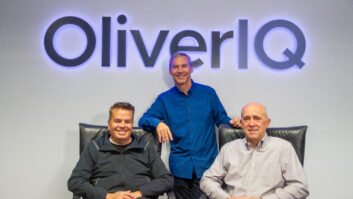Over its 27 years of operation, Tweeter etc. has honed a business model that has made it the dominant high-end A/V specialty store in New England.
Now, as Tweeter Home Entertainment Group begins to coalesce its far-flung acquisitions, it will deploy the same battle-tested formula throughout its newer markets. Here are some of the key ingredients of that recipe:
Merchandise Mix: A sharp focus on mid- to high-end, service-intensive products is what separates — and protects — Tweeter from the big box competition.
Video, at 40% of sales, makes up the largest piece of Tweeter Home’s business, followed closely by its core audio business, at 38%. Mobile audio constitutes 15% of sales, while accessories and such “other” categories as custom installation account for 8% of revenue.
“We’re highly focused on selling audio with video,” explained Bernie Sapienza, merchandising and purchasing VP. “To not sell both is a crime. You’re doing an injustice to the consumer to sell them a big screen TV without an audio system that will allow them to enjoy the full experience. If it looks great and sounds great, they’ll be enthusiastic repeat customers.”
Moreover, Tweeter’s “Sell Audio With Video” strategy has helped enhance overall gross margin by spurring sales of more profitable audio products while the big-screen TV business matures.
As with most of the CE industry, digital products are fueling the lion’s share of sales growth. “I was pretty astonished, for example, by what digital has done for the camcorder business,” Sapienza said. “It revitalized it overnight, and it now represents 80% of our total camcorder business.”
And, thanks to the advent of HDTV and DVD, Tweeter’s loudspeaker business is ablaze. “People are buying six instead of two,” he said.
The company also has big plans for the custom installation business. “We’ll take it up a couple of notches,” he predicted.
Demographics: Tweeter has set its sights squarely on the Baby Boomer. According to chairman Sandy Bloomberg, the average customer is a 40-year-old male with an annual income of $70,000. “The prime demographic for the audio/video business is 18 to 54,” he explained. “Our customer is someone who graduated college in 1968, who grew up with The Beatles and the Vietnam War, and who has a passion for music. Anyone 57 or 58 years old missed out on that.”
Because the Boomers came of age during the rock ‘n’ roll ’60s, Bloomberg believes his customer base will last a lifetime. “Every year our demographic expands by a year,” he said. “Look, the Stones are still selling out stadiums. When this group turns 75, music will still be a part of their lives.”
Service: Ultimately, service is the cornerstone of Tweeter’s success. As Bloomberg noted, “We view our customers as precious assets. So rule number one is ‘The customer is always right.’ Rule number two is ‘When the customer is wrong, refer to rule number one.'”
To achieve a high level of customer service and a knowledgeable sales force, the company attracts — and retains — CE enthusiasts to man its sales floors. “Our sales associates have a passion for the business, and most have chosen this as a career,” he said. “Store managers have been with us for seven years on average.”
What’s more, the company’s “relationship-selling model” encourages a comfortable, low-pressure approach in which associates spend an average of 25 minutes with a customer. “There are a million little battles that get waged every day between sales guys and customers,” he said. “We build long-term relationships.”
While pricing isn’t a key selling point for Tweeter, the company maintains an “everyday competitive pricing” policy that keeps its price points on par with local competitors.
Indeed, under its patented Automatic Price Protection program, Tweeter will automatically mail a check to a customer for the difference between the purchase price and a lower price that’s locally advertised within 30 days of the buy. Customers also have up to 60 days to return a product for a full refund.
“We try to focus on the product rather than price,” said Neal Taylor, manager of a Tweeter etc. store in Burlington, Mass. “We believe that cheapest doesn’t always represent the best value.”
Nonetheless, Taylor recalls the shock and glee of a customer who made a big-ticket Yamaha purchase and later received an unexpected bonus after the item was featured in a competitor’s circular at a significantly lower price. The check amount: $700. — Alan Wolf













